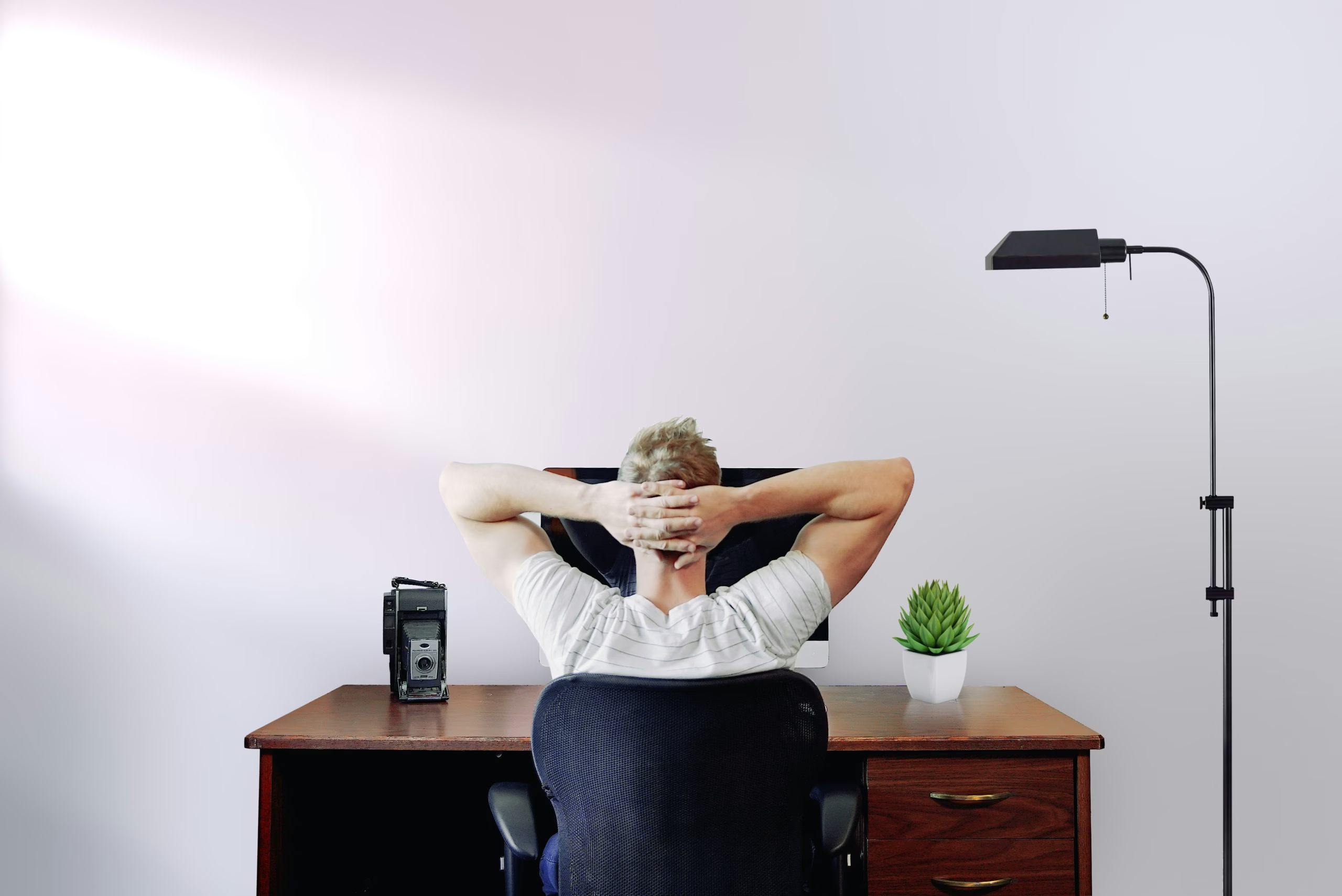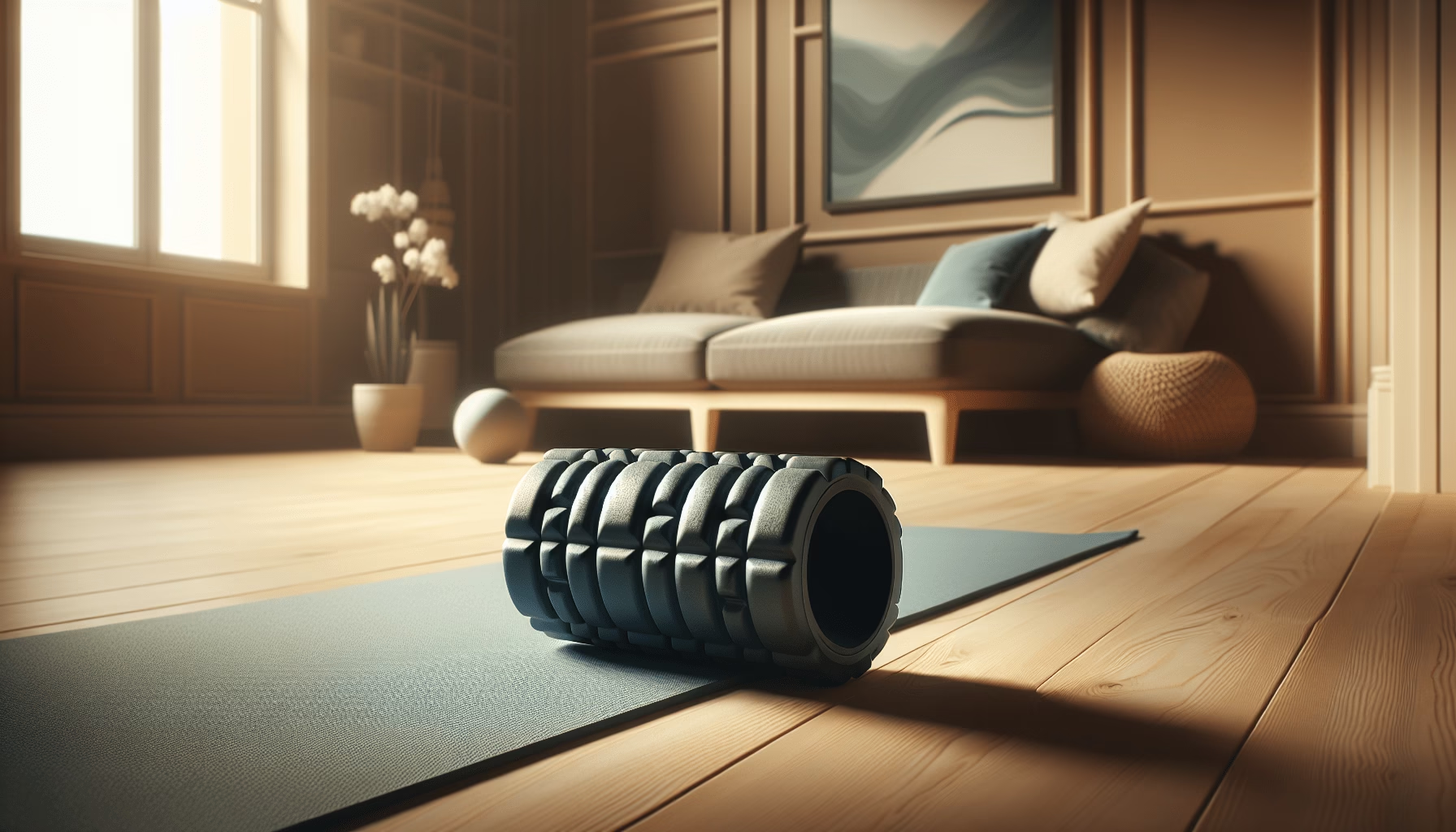Myofascial Release Methods for Desk Workers: Have you ever noticed how those long hours at your desk feel like they’re aging you in dog years? If you’re nodding along, you’re not alone. As a desk worker, you’re in a unique club—one where sitting for too long is the unwelcome VIP. It’s almost like you signed an invisible contract for tight shoulders, an achy back, and perpetual tension.
But fret not! There’s a method that could be just what your tired muscles need: myofascial release. This isn’t just a buzzword tossed around in wellness circles; it’s a genuine technique with the potential to give your body the TLC it desperately craves after countless hours in the chair. Let’s explore how myofascial release methods can be a game-changer for those chained to a desk.

Table of Contents
The Origins of Myofascial Release: A Balancing Act
This technique might sound like a fancy spa treatment, but myofascial release has deeper, more practical roots. Myofascial release, believed to have originated in the therapeutic practices of ancient cultures, has evolved significantly. It’s a hands-on, manual therapy that involves applying gentle, sustained pressure to the myofascial connective tissue to eliminate pain and restore motion.
Historical Connections
Back in the late 20th century, a physical therapist named John F. Barnes popularized this practice as we know it today, even though its concept is not entirely novel. The idea is to focus on the fascia, which is like your body’s Saran wrap—an extensive, interconnected web of tissue encasing muscles, bones, nerves, and organs. Interestingly, the fascia can be adaptive yet stubborn. Like an elastic band that’s been overstretched, it sometimes just doesn’t spring back quite right without a little coaxing.
The Myofascial Complex: Intertwining Threads
But what is myofascial exactly? You might think of it as an intricate tapestry of tissue—a finely tuned network that supports, protects, and binds everything in your body. Unlike muscles that can be stretched and strengthened, fascia can sometimes become stuck or tight, restricting movement and causing discomfort.
Fascial Health
When your desk job has got you hunched over like a human question mark, your fascia adapts to this new normal, which isn’t great news for your muscles. Over time, micro-tears in muscle tissues occur due to prolonged tension, leading to trigger points—tight, uncomfortable spots where the fascia has knotted up.

Desk Jobs: A Fascia’s Worst Nightmare?
The modern workplace isn’t the healthiest environment for your body, let’s face it. Apart from the mental strain, physiological issues surface from spending long hours at a desk. Our bodies, after all, aren’t made to be sedentary. They need variety—moving, stretching, standing, and, yes, occasionally lounging on the couch.
Occupational Hazards
When you’re clocking those hours seated at a computer, what happens to your muscles? Well, the overarching term here is tension. It doesn’t take long before your back feels like a plank, your neck stiffens, and your shoulders inch up to your earlobes. These changes to your body’s alignment also affect the fascia, causing it to tighten and restrict your range of motion.
Common Complaints
- Low Back Pain: That familiar ache is often a result of prolonged sitting, where the fascia in the lower back tightens.
- Neck Strain: The forward-leaning position can cause tension in the neck and shoulder areas.
- Wrist Stiffness: Typing away without ergonomic support can create fascia tension in the arms, leading to discomfort over time.
The Myofascial Release Techniques: Hands-On Solutions
To embark on this journey towards better physical health, you don’t necessarily have to call a specialist. You can start applying these techniques on your own, right at your desk or at home. Think of it as self-care with a functional twist.
Foam Rolling: The DIY Approach
Foam rollers are excellent tools for myofascial release. They are essentially broad cylinders of dense foam that can be used to “roll” out the tension in your muscles and fascia. Here’s how you can start:
- Choose Your Roller: Opt for a medium-density foam roller, especially if you’re a beginner.
- Targeted Muscles: Rest the muscle you wish to work on over the roller.
- Slow Movements: Use your body weight to apply pressure gently, moving slowly to cover the entire length of the muscle.
- Focus on Trigger Points: When you hit a tender spot, pause for about 30 seconds to allow the tissue to relax.
Ball Techniques: Pinpoint Precision
You can also use a tennis ball or a special massage ball for more targeted release.
- Identify the Spot: Place the ball under tight areas, such as between your shoulders or under your hips.
- Gentle Pressure: Lean into the ball, using small movements to target the tension.
- Controlled Breathing: Breathe deeply to help your muscles relax during the process.
Desk-side Stretches: Easy Peasy Applications
Even at your desk, you can perform certain stretches that foster release in the fascia:
- Neck Stretch: Tilt your head to the right, gently pulling with your left hand for a deep stretch.
- Upper Back Stretch: Interlace your fingers in front of you, rounding your shoulders forward.
- Hamstring Reach: Extend one leg out under your desk and reach forward gently, targeting the fascia along the back of your leg.

Understanding the Science: Why Does It Work?
“Skeptic” might be your middle name, and that’s okay. Science has some supporting evidence for myofascial release, which might convince you of its efficacy.
The Fascial Network and Pain Relief
The fascial tissue, when healthy and unrestricted, moves fluidly over muscles and bones. Myofascial release aims to alleviate any restrictions and foster movement between these layers, therefore reducing pain and enhancing functionality. This technique stimulates blood flow, decreases soreness, and improves flexibility—think of it as defrosting frozen parts of your body.
The Relaxation Response
Myofascial release also taps into the body’s relaxation response—your inherent ability to reduce stress levels. It appears that the manual pressure helps lower levels of cortisol, the stress hormone, while encouraging endorphin production, contributing to an overall sense of well-being.
Visual Aids: Bringing It Together
You might find videos and infographics particularly useful as you dive into these methods.
Trusty Videos
Platforms like YouTube have numerous videos guiding you through each step. Observe someone go through the motions of foam rolling or ball techniques, and notice how they position their bodies.
Infographics
Consider seeking out infographics that detail the anatomy of the fascia, ideal desk-side stretches, or various trigger point locations. These visual aids offer immediate, easy-to-digest information.

Real-World Testimonials: Success Stories
Sometimes, there’s nothing quite like hearing how others in similar boats have found their way back to smoother waters.
Case Studies
- The Remote Worker: Sarah, who’s been working from home, took up foam rolling as part of her daily routine and noticed a significant reduction in her chronic back pain.
- The Office Executive: Jake incorporated ball techniques into his breaks, helping him combat wrist stiffness and alleviating tension headaches.
Comparisons
Charts or tables illustrating before-and-after scenarios of individuals using myofascial release can be particularly enlightening. They offer a visual perspective on how a simple foam roller or a tennis ball can physically and mentally transform someone.
A New Normal: Bringing Myofascial Release Into Your Routine
With all these strategies laid out, it’s time to consider integrating myofascial release into your day-to-day existence. Start small—perhaps a five-minute session amidst your workday or a more extended session after hours.
Formulating a Personal Plan
Begin by identifying the areas that seem to need the most attention. Are your shoulders forever scrunched, or perhaps your lower back can’t remember what comfort feels like? Tailor your routine based on these spots, gradually expanding as you become more aware of your body’s needs.
Office Integrations
While it might sound quirky, consider introducing myofascial tools to your workspace. A small foam roller under your desk, a massage ball stashed in your drawer—it’s just a small leap to incorporate quick, effective releases into your workday.
Future Prospects
The wellness landscape continues to adapt as research and techniques evolve. Myofascial release might very well become a staple, much like ergonomic desks and mindfulness breaks. By embracing it now, you’re not just tending to your current comfort but investing in your ongoing health.
In conclusion, think of your fascia as a complicated, albeit loyal, friend. Its complex structure translates every moment you spend hunched over your keyboard, waiting for you to pay attention. With myofascial release methods, you have the tools to unravel the fabric of tension, glide fluidly, and perhaps redefine what comfort means amid a busy work life. Your muscles will thank you, maybe even send a postcard from Far Relax-ville.

Massage Techniques for Office Workers: Relieving Neck and Back Pain

